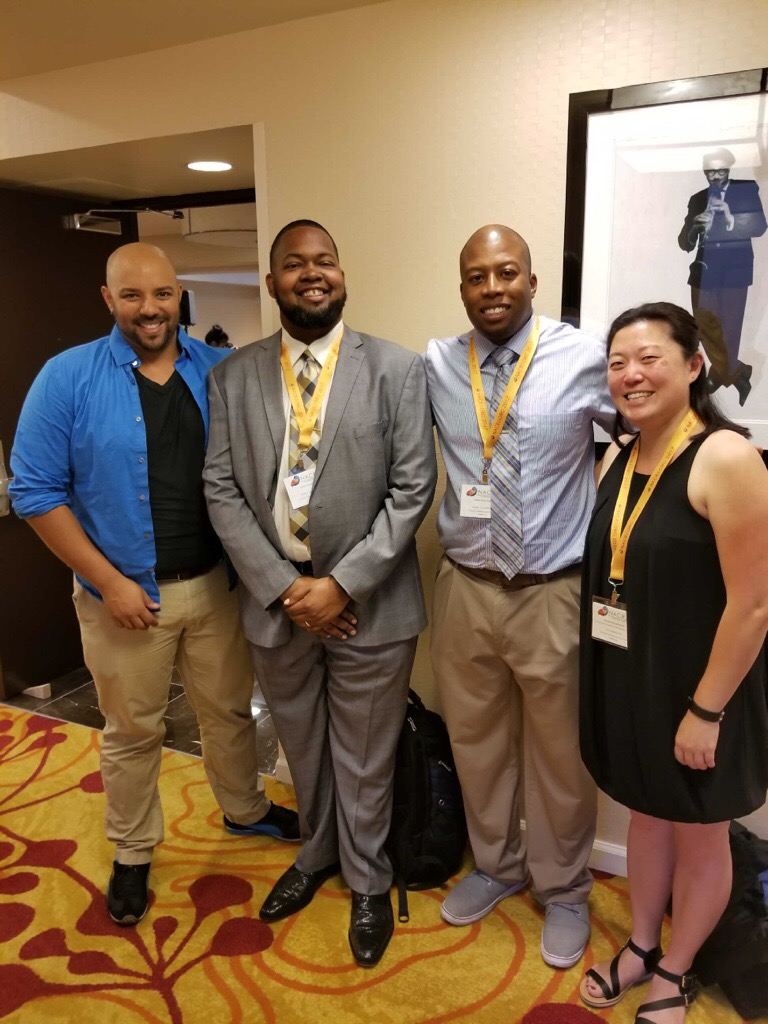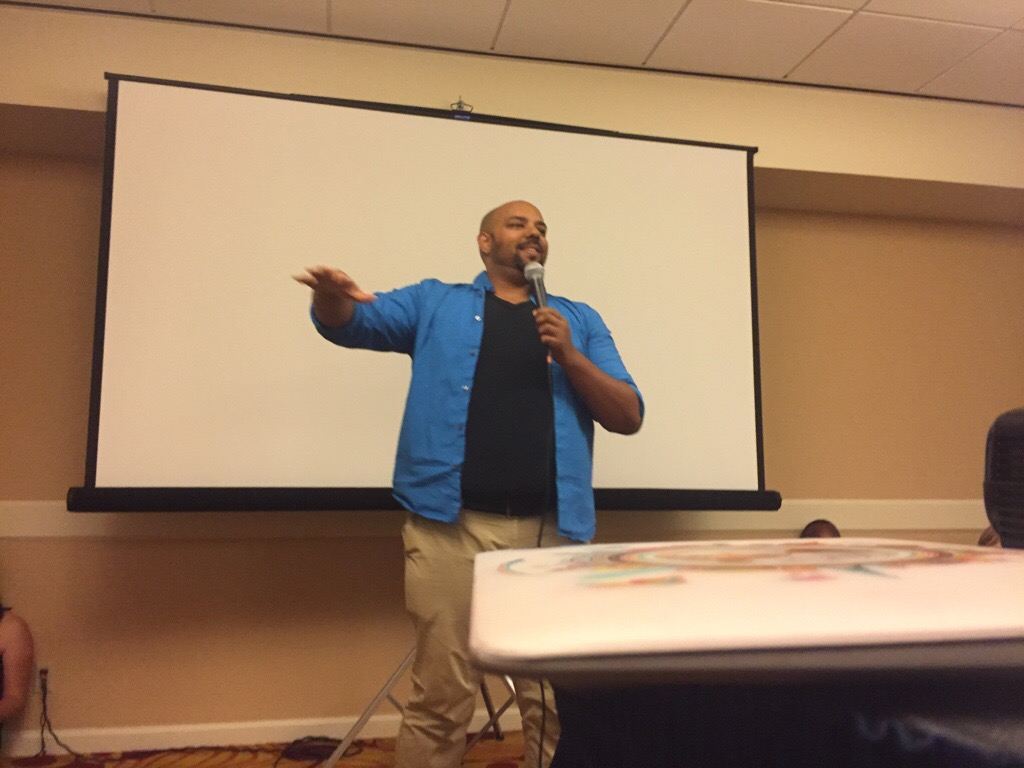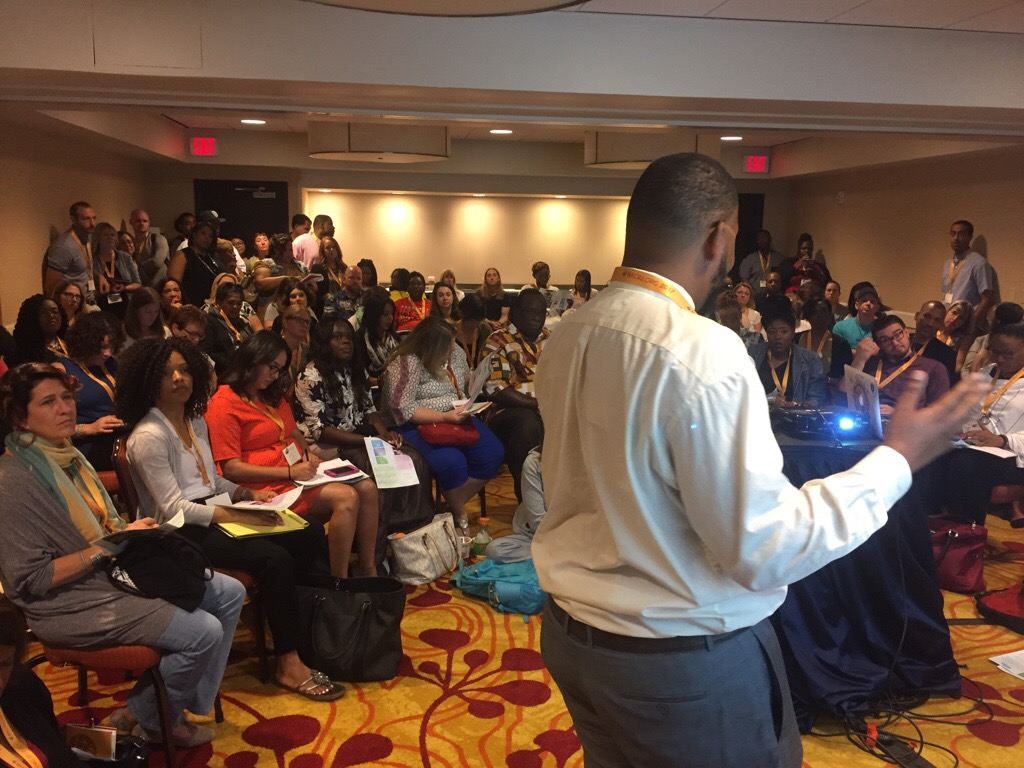Back in March 2017, done of the members of the Restorative Justice League (#RJLeagueChat), Ken Johnson (@KenJohnsonUSA), a renowned author/trainer in the Restorative Justice community, mentioned that the national NACRJ 2017 Restorative Justice Conference in Oakland would be a great experience for anyone in the group. For anyone not familiar with Restorative Justice, it is a way to repair harm, where the survivor, person/people who caused the harm (if there is one), and the community come together to decide how they can repair that harm together. The strategies that help with implementing Restorative Justice are called Restorative Practices. Restorative Justice is a growing movement that in the US has roots in the criminal justice system, but on a wide scale is being implemented in schools to build community and move away from punitive discipline practices which only contribute to the School-to-prison pipeline.
Well, myself and Victor Small (@MrSmall215), co-moderator of the Restorative Justice League, decided to not only attend, but submit a proposal to share our experiences with RJ to a wider community. In April we found out that our proposal was accepted, and that our session was going to be a panel discussion that would include two other RJ practitioners, Becky McCammon (@MsMcCammon), Restorative Practice Program Coordinator for St. Paul Federation of Teachers, St. Paul (MN) Public Schools, and Tyrone Botelho, Co-Founder of CircleUp Education. Our session topic was Developing Effectice “Buy-In” Strategies in Restorative Schools. We did some prep work a few weeks before the conference to outline our presentation, and deciding the order (starting with Victor to share his experiences at the classroom level, I’d go second to share my experience at the school-wide level, Becky third to share her experience implementing RJ at the school district level, and finally Tyrone would share his experience training schools and other organizations on RJ) but we didn’t have the opportunity to get together before presenting to hash everything out like we hoped to. There were a couple logistics issues with our session, but like the professional educators we are, we adjusted on the fly and our session turned out extremely well. I saw Tyrone later in the day and we shared that multiple conference attendees told us that ours was the best session they attended all day. That was pretty cool.
Besides our presentation, this conference experience was a total bucket filler for me, because I got me out of my comfort zone several times (including my first experience with gender neutral bathrooms) and I saw that the RJ movement is powerful and is a force to be reckoned with. I had several in-depth conversations between formal sessions that really made the difference in my experience. I really came away feeling that each person that believes in the power of Restorative Justice, can and will make a difference in their communities by implementing Restorative Practices.
My conference started off on Saturday morning, June 17, I missed the first two days of the conference due to other obligations, but right after I registered I met one of Tyrone’s colleagues who is currently a teacher/RJ coordinator in a nearby school district, with aspirations of entering K-12 school administration. It was really cool to share with her my experiences as a new administrator, things like what I enjoy about the job, my biggest challenges, and the AP interview process. It was great dialogue, and I hope that our conversation will help her reach her goals.
While in line at lunch I met a young man who was Vlogging his experiences to share with his community back home in New York. He is an intern and got his opportunity to participate in the conference because the conference organizers sought out people who were justice system involved to add their voice to the conference. His internship was specifically for young men formerly incarcerated, hoping to make change and meet the leadership needs in their communities. He even let me share a spot in his Vlog, explaining what I hoped to get out of the conference.
During lunch I sat with a pastor from Maryland, a college enrollment advisor from Grand Rapids, Michigan, whose school helps inmates earn their degree while incarcerated, and two men from New England, who do contract work with schools around Restorative Practices, and trauma-informed care. I had great conversation with Joe, one of the contractors, around how much we were getting out of the conference. One of the things he told me that he really liked was the fact that we were all there with a similar motive, to change a system of incarceration and school discipline that is not working. Joe pointed out that the system is actually working. It was meant to destroy a person, their family, and community, so the system is working exactly how it was designed. Joe went on to discuss his work, his own personal struggles, and even his implicit biases (based on harmful experiences). One thing that stood out in our discussion were some lessons that Joe took away from a trauma-informed care discussion with Jim Sporleder (@SporLin) (Their discussion actually occurred before this conference). Joe shared three specific steps that we can take when interacting with students who are exhibiting signs of trauma. 1. Drop the mirror – we often take it personally when a student lashes out on us, when it’s really a cry for support because they don’t know how to deal with whatever they are going through. 2. De-escalate – Check in with the student (on a scale of 1-5, how stressed are they feeling), then give them a chance to cool off before attempting to address their needs. 3. Finally, build relationships – A caring adult relationship is a path to hope. Without knowing that these were formal strategies, I’ve used these same steps as a response to students I interact with.
I went to a session called On Understanding Whiteness: A Workshop for and by White People in RJ. Although I didn’t have any conversations with the panelists, one of the biggest takeaways was that “White” people often create a connection with the struggle of brown people without “earning” that connection, with comments like, “I don’t know what it’s like to be a black male, but…” The facilitator said, “That’s the problem, there is no “but,” white people try to empathize, but should instead, acknowledge that they don’t know, period, no comma.”
Following that session I had the opportunity to meet a parent from my school district, who has really dug in to learning about RJ and wants her son to experience a school where the leadership is restorative in thought and action.
In the last session I attended, Disrupting the School-to-prison Pipeline, I heard one of my favorite exchanges of the day. A member of the groups asked the facilitators, “What are 3 things that I should take away from this conference?” The response: “1. I have to be restorative, in every situation. We as the adults have to model the expectations that of behavior that we have for the students. 2. What I know can be shifted. I thought that school discipline had to be one way, but through my experiences with RJ, I know school discipline can be different. 3. No matter who or what gets put into RJ has a racial component, so hopefully you leave here with more questions about how RJ works, what’s working for that group, who are your top trainers, etc.?
My final conversation was with a young man that attended my session in the morning. He is from North Carolina and he really wants to bring RJ to his school, but his school administration is opposed. He told me that he wished that he could have brought his admin team to see and hear our stories. His ultimate goal is to become a principal or superintendent so that he can drive the change he feels is necessary.
My one day at NACRJ 2017 was impactful. Having the opportunity to share my experiences implementing Restorative Justice and Restorative Practices was great, but more importantly I was able to take time to learn the stories of so many others, which confirmed for me that there is so much power and value in taking the time to build community. The more we know about each other, the more likely we’ll be to treat each other like human beings, and to me, that’s what the Restorative Justice movement is all about.




